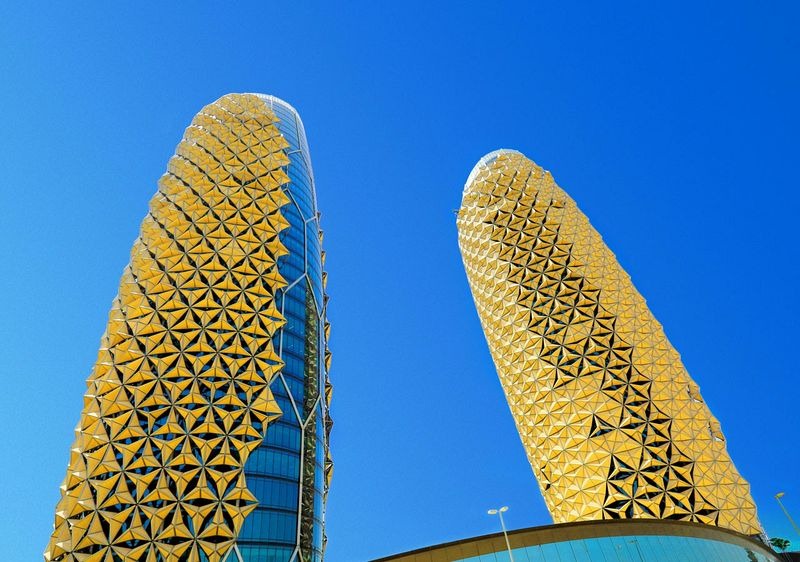Glass-façade towers are popping up every where with little thought and consideration for the local climate, even in the harsh desert environment of Saudi Arabia and United Arab Emirates where the mercury can shoot north of hundred degrees in the summer. These glass buildings let in sunlight that quickly heats up the buildings’ interior turning them into greenhouses, consequently requiring even more air-conditioning to make the buildings habitable. The increased energy cost negates any benefit in time, materials and money that was to be had by choosing glass instead of brick and mortar.
The Al Bahr Towers in Abu Dhabi is no different. The 29-story, 145-meter-tall twin towers, located at the intersection of Al Saada and Al Salam Street, has a façade made entirely of glass. But Al Bahr’s exterior is covered by a protective cocoon of 2,000 umbrella-like sunshades that open and close automatically in response to the intensity of sunlight.

Photo credit: www.geberit.com
The screen wall was inspired by the traditional wooden lattice screens called “mashrabiya” that have filled the windows of traditional Arabic houses since the 14th century. Carved in geometric design mashrabiya provides both shade and privacy, but still allows occupants a view of the exterior.
The outer skin sits two meters outside the buildings’ exterior on an independent frame. Each triangle is coated with fiberglass and programmed to respond to the movement of the sun. At night the umbrellas remain folded so you’ll see more of the facade. As the sun rises in the morning in the east, the shading elements along the east of the building begins to close and as the sun moves round the building, the whole vertical strip of mashrabiya move with the sun.
The dynamic mashrabiya reduces solar gain by more than 50 percent, significantly reducing the building’s energy expenditure due to air conditioning. Besides, the shade’s ability to filter the light has allowed the architects to avoid dark tinted glass which inevitably restricts all incoming light all of the time. This has also kept artificial lighting in the interior to a minimum.
Photo credit: www.ahr-global.com
Photo credit: www.ahr-global.com
Photo credit: www.thenational.ae
Photo credit: compositesandarchitecture.com
Photo credit: www.ahr-global.com
Photo credit: arkitekture.al
Photo credit: arkitekture.al
Photo credit: arkitekture.al




















Mashrabiya is a great tradition in the Arab architecture, which has become part of the interior design. Creating real estate projects in the East, we use this design element to emphasize the color and make interiors and exteriors more expressive.
ReplyDeletehttp://arabicmashrabiyapatterns.tumblr.com/